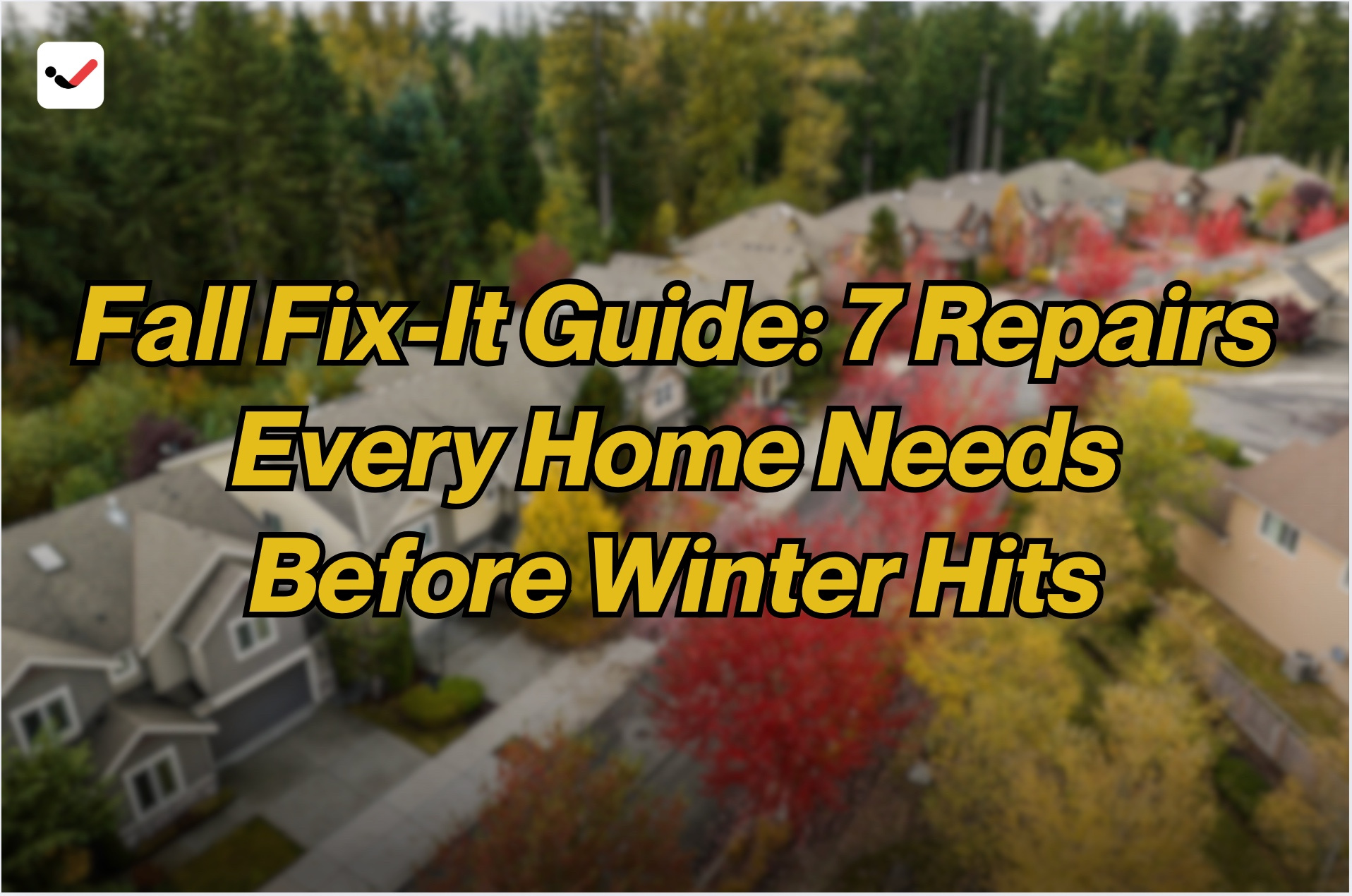Fall Fix-It Guide: 7 Repairs Every Home Needs Before Winter Hits
Fall Fix-It Guide: 7 Repairs Every Home Needs Before Winter Hits

As summer fades and colder months move in, homeowners need to prepare their houses for freezing temperatures, snow, and wind. Fall is the best time to catch up on home maintenance tasks that can prevent costly damage later. A little effort now can save you from big problems when winter weather hits hard.
Waiting until it’s too cold or snowy to fix things like a drafty window or a weak roof is a mistake. These issues not only make your home less comfortable, they can also raise energy bills and lead to expensive repairs. With this fall home maintenance checklist, you can make sure your house is ready to face winter head-on.
1. Seal Windows and Doors
Check for drafts around all windows and doors. Even small gaps let cold air in and warm air out. Use weatherstripping or caulk to seal any leaks. You can also install a door sweep at the bottom of exterior doors for extra protection. Well-sealed doors and windows improve home energy efficiency and reduce heating costs.
2. Inspect the Roof and Gutters
Look for missing or damaged shingles on your roof. Snow and ice can easily slip under weak spots and cause leaks. If you're not comfortable climbing up to check, hire a roofing contractor. While you’re at it, clean out your gutters and downspouts. Clogged gutters lead to ice dams, which can damage the roof and interior walls. Make sure water flows freely away from your home.
3. Service the Heating System
Your furnace or heating system needs a checkup before it starts working full-time. Replace the air filter, clean the vents, and schedule a professional inspection if it hasn’t been done in the last year. This keeps your heating system running efficiently and lowers your energy bills. If you have a fireplace or wood stove, clean the chimney and check for blockages.
4. Protect Pipes from Freezing
Frozen pipes can burst and cause major water damage. Insulate exposed pipes in basements, crawl spaces, garages, and exterior walls. You can use foam pipe sleeves or heat tape. Don’t forget to disconnect and drain garden hoses and shut off outdoor faucets. This simple step is often overlooked and leads to cracked pipes in freezing temperatures.
5. Check Smoke and Carbon Monoxide Detectors
Winter means closed windows and more time using heaters, fireplaces, and stoves. That increases the risk of fire or carbon monoxide leaks. Test all smoke and CO detectors and replace batteries if needed. If your detectors are more than 10 years old, it’s time to get new ones. This is one of the most important winter home safety checks you can do.
6. Clean and Store Outdoor Equipment
As part of your fall yard cleanup, drain fuel from lawnmowers and other gas-powered tools. Store them in a dry place. Cover outdoor furniture or bring it inside to prevent weather damage. Shut down your sprinkler system and have it winterized to avoid burst underground pipes. These small tasks protect your tools and equipment until spring.
7. Examine Insulation and Attic Ventilation
Check the insulation in your attic and walls. Good insulation keeps heat inside and cold air out. Also, make sure your attic has proper ventilation to prevent moisture buildup and mold. Blocked vents or poor airflow can cause heat to escape through the roof, raising energy costs and causing ice dams. Fixing insulation problems now means a warmer home all winter.
Preparing your home for winter doesn’t have to be overwhelming. This fall home repair checklist helps you stay ahead of the season. It’s about keeping your home safe, warm, and energy-efficient. By handling these basic repairs in the fall, you protect your investment and avoid bigger problems later.
Don’t wait until the first snowfall to take action. Use this guide to get started on your fall home maintenance today. With these steps, your home will be ready for whatever winter brings.

